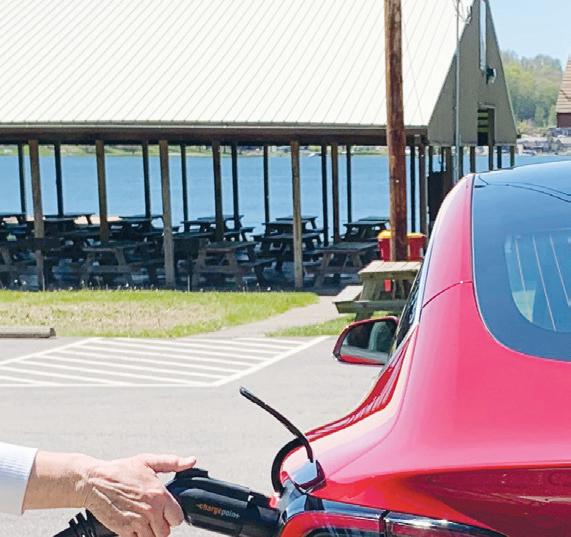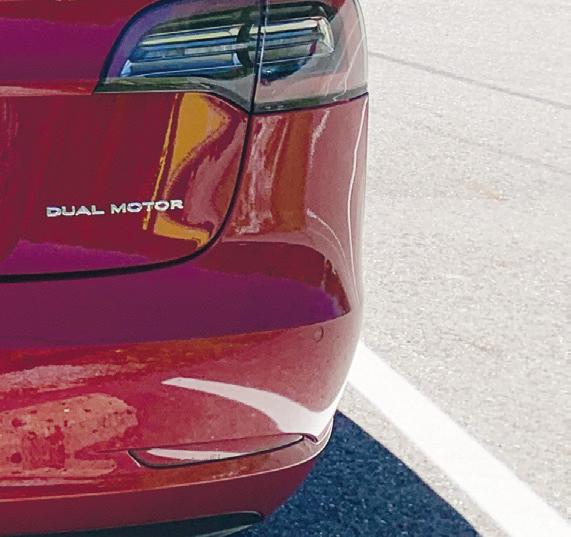
5 minute read
Enthusiastic about EVs
Local drivers find electric vehicles fulfill their driving needs
BY A.J. ATKINSON, MANAGER OF MARKETING AND MEMBER SERVICES
With growing government support and vehicle manufacturers making aggressive pledges to produce more electric vehicles (EVs), Carroll Electric Cooperative feels there is value in sharing information about EVs with our members.
We recently began interviewing members about their experience owning an EV in our rural communities, with topics including public charging, nearest available servicing for an EV, and what traveling long distances is like with an EV. We learned a lot from these conversations and saw value in sharing these experiences with you!
One of the biggest concerns we hear from those considering the purchase of an all-electric vehicle is where will they charge their EV, especially in Carroll County? Conversely, when speaking to members who own EVs, this is something of very little concern.
“You can absolutely own one in Carroll County,” said Megan Boyd, who has been driving her 2022 Tesla Model Y Performance since June of 2022 . “During the summer, I just existed on plugging into 110 (volt wall outlet). When you plug into 110 , you get 5 -7 miles an hour. Which is fine, though, because when you think about it: We live at Atwood, and let’s say you work in Carrollton. You’re not really driving more than 20 , 30 miles a day even if you have to take your kid to school. So, you’re ‘filling it’ back up easily.”
Karen Carlisle, who purchased her 2020 Tesla Model 3 Long-Range nearly three years ago, agreed that the ability to charge your EV at home greatly diminishes any charging anxiety. She even said traveling long distances and relying on public charging stations is far from a nightmare.
Despite currently owning other gas- or hybrid-powered vehicles, Carlisle’s Tesla is her vehicle of choice for her long-distance travels. She estimates she has made about 40 round trips to Atlanta, Georgia. She said Tesla’s navigation system makes planning the trip easy.
“The navigation system tells you your whole trip, where to stop to charge and for how long,” Carlisle said. “It’s programmed so that it gets you to your destination in the quickest way. You just charge for 20 or 30 minutes and then you’re on your way to the next charger. You’re probably adding another hour to your trip, like I do when I go to Atlanta, but that’s when I eat. Most people stop to eat when they travel for 12 hours anyway. You get over the charging anxiety pretty quickly, at least with a Tesla.”
But what if all the charging stations are in use when you arrive at the charging station? Do you then have to wait half an hour for someone’s charging session to end before you can begin your half-hour charge?
Boyd admitted this was one of her concerns when she took her Tesla to Florida during the busy Thanksgiving holiday and had to rely on public charging stations her entire trip. However, the intuitiveness of Tesla’s navigation surprised her.
“When it’s routing you to a charger, it will tell you how many chargers are currently available at that station, like six of eight chargers available,” Boyd explained. “If that station becomes full while it is routing you there, (the navigation) automatically re-routes you to the next charging station, so it knows. My whole trip around Florida, I never ran into stations being full.”
Currently, Tesla’s Superchargers are only available to Tesla owners. When Boyd was researching EVs, she found purchasing a Ford Mach-E would add two to four hours to her Florida trips compared to taking a Tesla due to the increased number of Tesla Superchargers available.
Andrew Crabb, however, did not express any major di culties in finding chargers when he takes longer trips with his 2022 Hyundai Kona Electric.
“I go across Pennsylvania and there are three or four spots where I can get high-speed charging, so I just stop when I need to,” Crabb said. “I wait about 20 minutes longer than at a gas station stop, but I tend to stop a fair amount anyway when I’m driving even a gas-powered car. So, the stops to charge and walk somewhere to eat maybe add just a half hour. It has not been an inconvenience to charge.”
In addition to concerns about charging, Carlisle also knows a common concern among the public is about the battery’s lifetime and costs to replace the battery. But after driving 70,000 miles since purchasing her Tesla, she said its charging capacity has only dissipated about 3%.
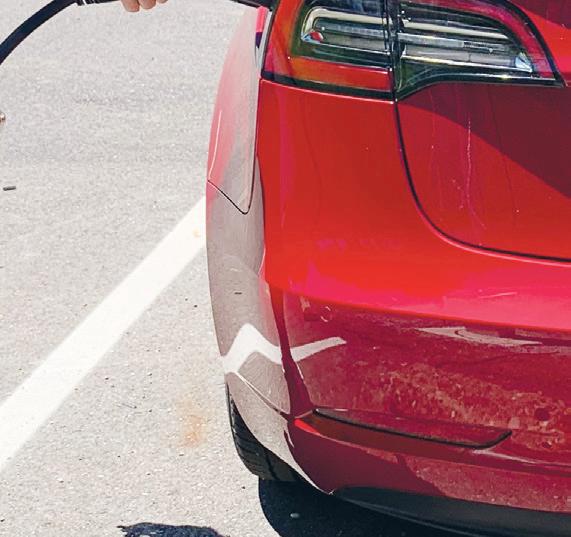

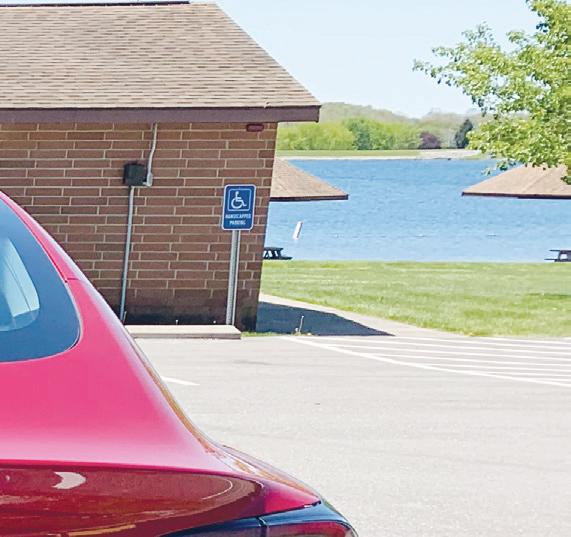
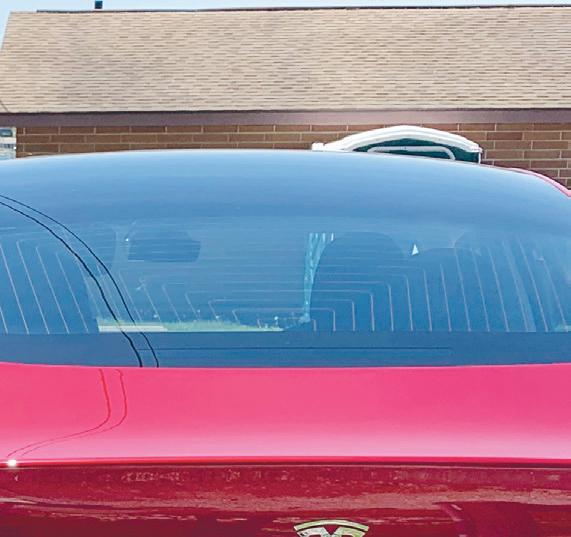
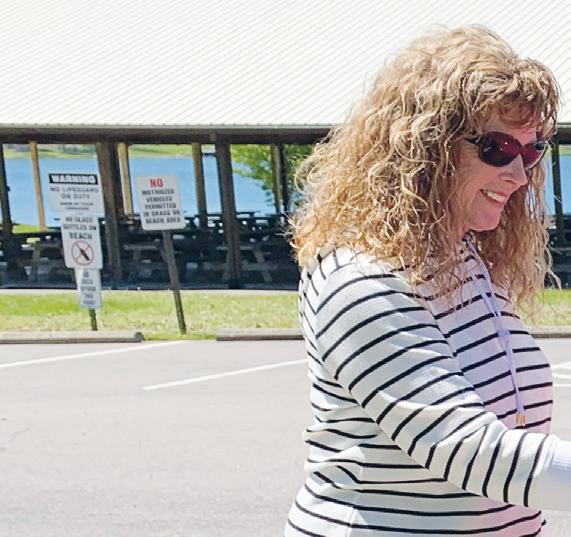
Carlisle said one of her favorite things about her car is that, even though it is three model years old, it is constantly making improvements through software updates.
“My car that I bought in 2020 is totally different than the car I have right now (because of the standard software updates),” Carlisle said. “That’s a game changer for me. It has more power than when I bought it, more range than the car I bought. Plus, it has all the new technological bells and whistles the newer models have.”
Though Carlisle has been satisfied with the upgrades that come standard with software updates, she said Tesla owners have the option to purchase additional features such as increased range or increased speed through the Tesla app. Owners also use the Tesla app to schedule maintenance appointments and charging sessions once plugged in, and for various other features.
While both Carlisle and Boyd are strong advocates for Tesla, they shared the same complaint that the customer service is all through the app and talking to a person is not possible. For example, to schedule anything servicerelated, like replacing the brake pads, you describe the issue in the app. You are then notified of the next available appointment. The Tesla service centers are growing, but the closest to Carroll County is a service station in Akron.
Meanwhile, Crabb said, Hyundai’s service for electric vehicles is similar to the service experience of owning a gas-powered vehicle.
“When I need to schedule service, I just push the Blue Link button on my rear-view mirror and I speak to a human right away. It’s like Hyundai’s version of (General Motor’s) OnStar.”
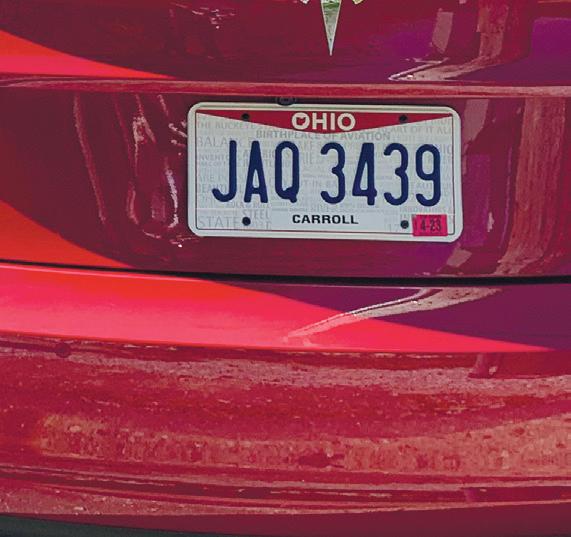
Crabb was quick to mention that the service needed on EVs is very minimal, basically tire rotations after every 5 ,000 miles. Even though the nearest Hyundai service station is 50 miles away in Boardman, he can go anywhere for a tire rotation.
Overall, all three drivers agreed that owning an EV did not require drastic adjustments. The driving range may be less than the 400 miles of range found in most gaspowered vehicles, but for the average driver traveling about 30 miles a day, it involves simply coming home and recharging it overnight, and it’s ready for the next day.
“I really think it’s important for people around here to know that nobody is out to force you to buy an electric car. It’s just another option,” Boyd said. “I don’t ever foresee a day when we hook our car trailer with a 6,000-pound car inside and have it be e cient enough, but I love (my Tesla). It’s never going to be for everybody, but for the most part, there’s nothing impossible about living in Carroll County with an EV.”
